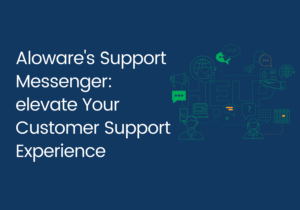It’s no secret that customers’ happiness is a crucial indicator of a business’s growth and success. Yet, it’s surprising to see that not all companies are heavily invested in improving customer experience. It could be because it’s hard to measure the value of customer service, or they find it difficult to set up and maintain customer service channels. Fortunately, Call Center AI is a thing now, and many companies are reaping benefits from revolutionizing their customer experience to improving work productivity. It streamlines the processes and also improves the performance of agents.
There is a growing pool of technologies that can help streamline and improve customer support. However, before delving into it, there are specific steps a business should take to start utilizing this feature. Even though Call Center AI makes great investments for client-facing BPOs, it is still crucial to begin with understanding the different ways AI can be properly implemented. Here are specific steps you can take to guide you through the process:
Table of Contents
Build a Call Center with an Integrated Technology Infrastructure
Start with establishing a call center that supports AI. Integrate technologies such as IVR, speech analytics, and learning management systems to resolve all challenges. Perform this task efficiently to make call center operations more resilient and flexible, create personalized experiences, and improve an agent’s performance.
Align the Team with New Goals
To avoid failure, companies should align team members with the new changes involving AI. All team members should then be trained in the new AI-based processes so they can put them to use. Businesses can start by communicating their strategy and goals to employees from top to bottom. They can use a collaborative planning procedure to encourage good performance and outcomes.
Pay Attention to Agents
Evaluating the strengths and weaknesses of agents before training them for the new processes will ensure that they get the most out of that training. Connecting customers with the agents who can best help them will lead to ground-breaking results. Performance reviews for agents should be done to ensure that they are meeting the needs of customers effectively.
Perform Real-Time Alerts and Monitoring
AI helps call centers through real-time alerts and monitoring. When technology works the way it should, the chances of any compliance violations are reduced significantly. Obtaining data on unusual behavior before it starts affecting operations is vital to business health.
Grow with AI — Aloware Can Help
As the workplace evolves, the BPO industry must evolve with it, and investing in these essential call center tools — even in an uncertain environment — can reap dividends for years to come. AI offers some excellent tools and features to help improve the productivity of call centers and the outcomes they achieve for their customers. It also accelerates the processes and improves customer satisfaction without burdening the agents.
If a call center could use what AI offers, Aloware may be of some help to that business. This contact center solution enhances performance through automated features, unlimited texting, and calls. It is also quite helpful in providing excellent customer support. Get a demo today to give your employees a distinct edge in this new normal.




